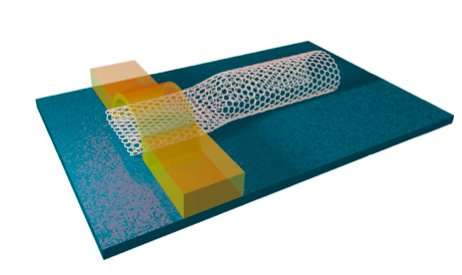Nanotransistors (UTS field effect _ unlimited switch speed) Nano PhD _ Microelectronics
Researcher and author: Dr. ( Afshin Rashid)
Note: In the structure of field effect nanotransistors based on carbon-graphene nanotubes with UTS for greater benefit, carbon nanotubes are completely placed inside the gate insulation .
Placing the gate around and on all the nanotubes, which improves the performance. Separating the source and drain area, si is added under the carbon nanotube. This removal continues until the bed insulation is reached. Then, using materials that have a high dielectric coefficient, insulation is created between the gate and the source and drain, and also a metal is placed on this insulation for better connection of the gate metal to the carbon nanotube.
In the structure of field effect nanotransistors based on carbon-graphene nanotubes with UTS, the process of making nanotubes has caused variability in the diameter of the tubes, which is usually between 1 and 2 nanometers. By changing the diameter of the nanotube, the band gap changes, and as a result, the threshold voltage of the UTS transistor and the current of the UTS transistor change. Unlike rear gate gate carbon nanotube effect transistors, a large number of these transistors can be built on a single wafer, because the gates of each are separate. Also, due to the low dielectric thickness of the gate in the nanotransistor, a larger electric field can be created with a low voltage on the carbon nanotube. all Field effect nanotransistors based on carbon-graphene nanotubes with UTS on a wafer turn on and off at the same time because they have the same gate. The thickness of the oxide layer is high and on the other hand the production process is such that the contact surface of carbon nanotubes It is low in oxide gate and makes it difficult to turn the part off with low voltage.
Conclusion :
In the structure of field effect nanotransistors based on carbon-graphene nanotubes with UTS , carbon nanotubes are fully housed inside the gate insulation for added benefit .
Researcher and author: Dr. ( Afshin Rashid)
PhD in Nano-Microelectronics




